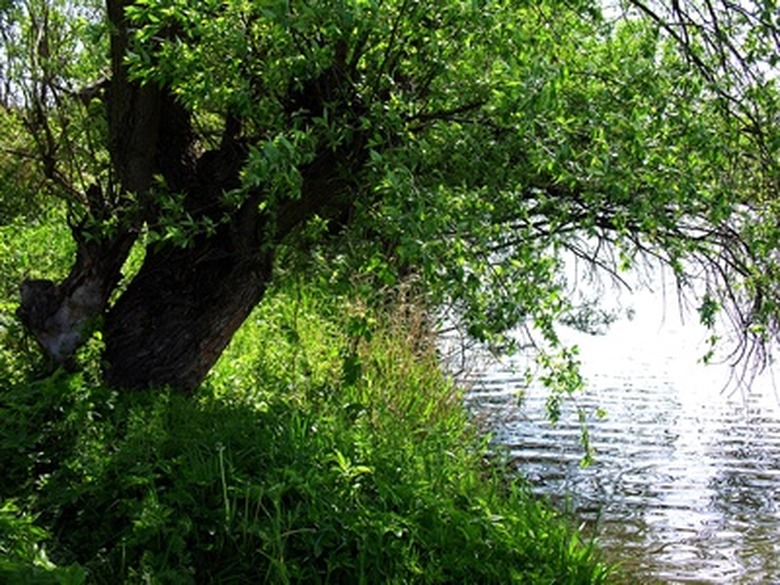Uses For Willow Trees
There are 170 species of willow that fall into subcategories of tree and shrub. Four species of willow are categorized as trees: the black willow, the weeping willow, the golden willow, and the white willow. The Black willow is the most seen, although the weeping willow is the easiest to identify. Willow trees have various uses that have changed through history, making the willow one of the most versatile trees used by man.
Manufacturing
One of the most common uses of willow trees has been in manufacturing. While willow trees can be used in the making of cricket bats, craft paper, baskets, and chairs, only the black willow is suitable for lumber, according to wood products specialist Daniel L. Cassens of Purdue University. Willow trees used for baskets have the branches harvested annually when the tree is dormant starting in late fall and continuing through spring. Black willow wood was once exclusive to the manufacture of artificial limbs, states the USDA Forest Service because it is a lightweight material that does not splinter. Boxes, furniture, turned pieces, doors, polo balls, cabinets, and toys are all manufactured from the wood. Black willow is also part of pulp manufacture.
- There are 170 species of willow that fall into subcategories of tree and shrub.
- While willow trees can be used in the making of cricket bats, craft paper, baskets, and chairs, only the black willow is suitable for lumber, according to wood products specialist Daniel L. Cassens of Purdue University.
Conservation
Willow trees have become commonly used in conservation efforts and soil erosion control. This tree is also one of the first woody species found along the outer edges of gravel bars and streams. Stream bank stabilization is often achieved with the meadow and sandbar willows. The use of black willows was common in early soil stabilization efforts and erosion control, states the Forestry Service. Willow trees are often used for reducing erosion of stream banks, bars, islands, and prevention of gullies in flood projects because of its flood tolerance and ease of propagation.
Agriculture
The growth hormones from the willow tree can help the cuttings and other plants grow. Willows are grown for biofuel, charcoal, wetland preservation, and building animal habitats.
- Willow trees have become commonly used in conservation efforts and soil erosion control.
- The use of black willows was common in early soil stabilization efforts and erosion control, states the Forestry Service.
Medicinal
The willow tree has had many uses in medicine and pharmacology through time. Willow bark tea is a traditional tonic for pain. Aspirin is a synthetic version that was created by Felix Hoffmann. The University of Arkansas states that Cherokee Indians used the bark as an infusion treatment for fever, insomnia, rheumatic pain, dysentery, and sore throat. Boiled bark was used by pioneers to purge illness.
Food
Willow trees are also used in the feeding of livestock and wildlife. Birds use buds and flowering catkins. Deer use twigs and leaves. Sap is taken by the yellow-bellied sapsucker according to the Forrest Service. Nests are often placed in willow trees by small nongame birds.
- The willow tree has had many uses in medicine and pharmacology through time.
- Willow trees are also used in the feeding of livestock and wildlife.
